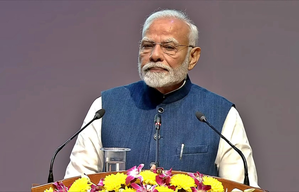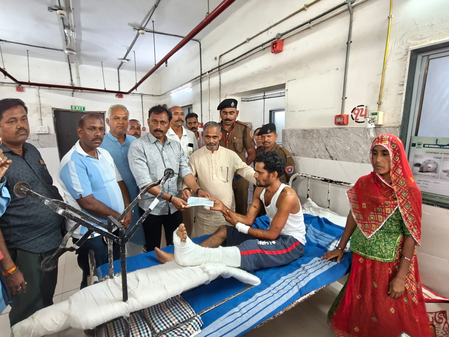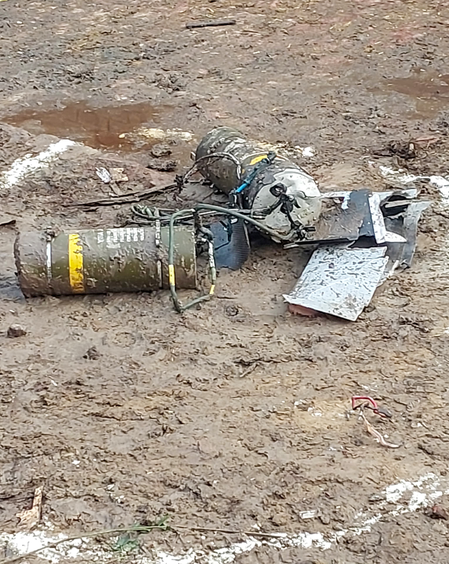New Delhi- The international scene in India’s view today is marked by a tentativeness injected by US President Donald Trump in the United State’s approach to India and Pakistan, increased influence of China on India’s neighbours, need for India to continue with Russian supplies in the spheres of defence and energy, challenge for India to keep up its active profile in both BRICS and QUAD, revelation of Chinese military support to Pakistan in the military confrontation between India and Pakistan that followed the Pak -directed terrorist attack at Pahalgam, the ongoing crisis in the Middle East and the prospect of India rising to become one of the top economies of the world. The current geopolitics is barely keeping the world from getting pushed towards a new Cold War- this is primarily because a certain bonhomie still existed between President Donald Trump and Russian President Vladimir Putin. International developments are keeping the world scene somewhat in a flux and India’s national strategy has to have the necessary flexibility to cope up with the same.The strategic paradigms for India are not difficult to define. Adjusting with President Trump’s somewhat erratic style of governance through Executive Directives, in pursuance of his maxim of ‘Make America Great Again’ (MAGA) and the call of ‘America First’ practised in domestic, foreign policy and trade& tariff spheres, has become important. Prime Minister Modi on his visit to the White House in February this year made it clear that India had an approach of understanding towards MAGA or America First and added that India would also like to call for ‘Make India Great Again’. India did not react to a group of illegal immigrants of India being sent back to this country in handcuffs in a military plane, in the follow-up on ‘Immigration Emergency’ declared by Trump and took the sensible line that India would cooperate with US in dismantling ‘the eco-system that had been created to encourage illegal migration to that country’. On balance of trade and tariffs India rightly favoured negotiations -befitting the status of a country that had offered its huge market to the world. Hints of India resisting any stark arbitrariness of the US in matters of trade,however, need to be clearly sent out.Another point of strategic challenge for India is the Sino-Pak alliance basically operative against India whose military dimension became evident when India retaliated against Pahalgam terror attack by taking out nine terrorist bases in POK and Pakistan. This precipitated a full -fledged military confrontation between India and Pakistan in which Pakistan used military hardware and ‘live inputs’ supplied by China besides the drones that were received from Türkiye. This went on till a ceasefire plea from Pak DGMO was accepted by India. The Dy Chief of Indian army recently confirmed that India was having to combat ‘three enemies’ and wanted India to draw lessons from this. It may be mentioned here that the growing proximity of Bangladesh to China and Pakistan also has strategic implications for India.A related matter is the threat of Islamic terrorism emanating from the Pak-Afghan belt where Pakistan enjoyed a certain ‘strategic depth’ against India. It is significant that Pakistan arranged a ‘give & take’ adjustment between the Taliban Emirate of Kabul and China by which the latter would extend its Belt&Road Initiative(BRI) to Afghanistan- this was like an economic investment- and Taliban on its part, would not rake up the issue of treatment of Muslim minorities in China, particularly in Uzbekistan next door. India needed to educate US on how Pakistan continued to foster Islamic terrorists on its soil while trying to gain American sympathy on the issue of attacks by the radicals of Tehrik-e-Taliban Pakistan (TTP). TTP had its own reasons for targeting Pak army establishments besides the Shiites.Radical Islamic forces are anti-US as they carried the historical memory of the anti-West Wahhabi revolt of the 19th century and are hostile to the Pak army for the friendship its Generals enjoyed with Pentagon. Shiites are of course the traditional ‘enemies’ of Sunni extremists. TTP has become more active after Pakistan was found to have ‘tamed’ the Kabul Emirate.In regard to the tension between US and China, there was no doubt that China was striving to become the second superpower by building not only its military and technological power but also its economic strength which it was consolidating at a fast pace. China-Russia axis remains inviolable and it is China that leads the combine against the US. India’s strategy should be to maintain friendship with Russia without prejudice to its relationship with US and not let any American reservations against import of oil and military equipment from Russia, come in the way of its traditional bonds with the latter. India is a major world power having a say on the global issues of ‘war’ and peace and it has the capacity to handle international developments keeping its national interests on top.Finally, of all the regions of the world where India had strategic stakes, Middle East is perhaps the most important. India has maintained friendship with all the major players of the region-Israel, Iran and Saudi Arabia- with their different international alignments but the military confrontation between Iran and Israel has threatened to create a global conflict after US in support of Israel, attacked the nuclear sites of Iran with bunker-buster bombs and China and Russia rallied behind Iran. A tenuous ceasefire holds at present as the Organisation of Islamic Conference (OIC) backed Iran’s case and called upon the UN Security Council to intervene immediately to negotiate for peace. Iran-Israel military conflict has assumed the form of a ‘civilisational clash’ between Islam and Zionism which can turn into a war of attrition creating a disturbing impact on the democratic world in general and India in particular.India has rightly called for cessation of armed confrontation between Iran and Israel, stoppage of human atrocities in Gaza and a peaceful resolution of Ukraine-Russia ‘war’. India favours a multi-polar world order that helps India to take a non -aligned approach to global conflicts and support world peace and humanitarian advancement. As a major world power India must become self-sufficient in defence and economic growth and base its international relations on mutually beneficial bilateral friendships. India has done well to oppose terrorism of all kinds from international platforms and in particular, condemn faith-based terror as the biggest threat to the democratic regimes. India and US as the two largest democracies of the world are together in denouncing Islamic terrorism and whatever be the differences of opinion among them on matters of trade and tariff, they have complete convergence against this important geopolitical danger. Notwithstanding the ‘political’ alignment that is there between China-Russia axis and Iran against the US, faith-based terrorism is not upheld by the Communist block- President Putin would not have forgotten the terror attack by ISIS-K on a concert hall on the outskirts of Moscow on March 22 last year in which 130 persons were killed and hundreds injured. Convergence on opposition to Islamic terrorism would help India to keep up its friendship with both US and Russia while continuing to deal with China as a major adversary.(The writer is a former Director Intelligence Bureau)–IANSdcpathak/r
The Third Eye: India’s strategy in current geopolitics





